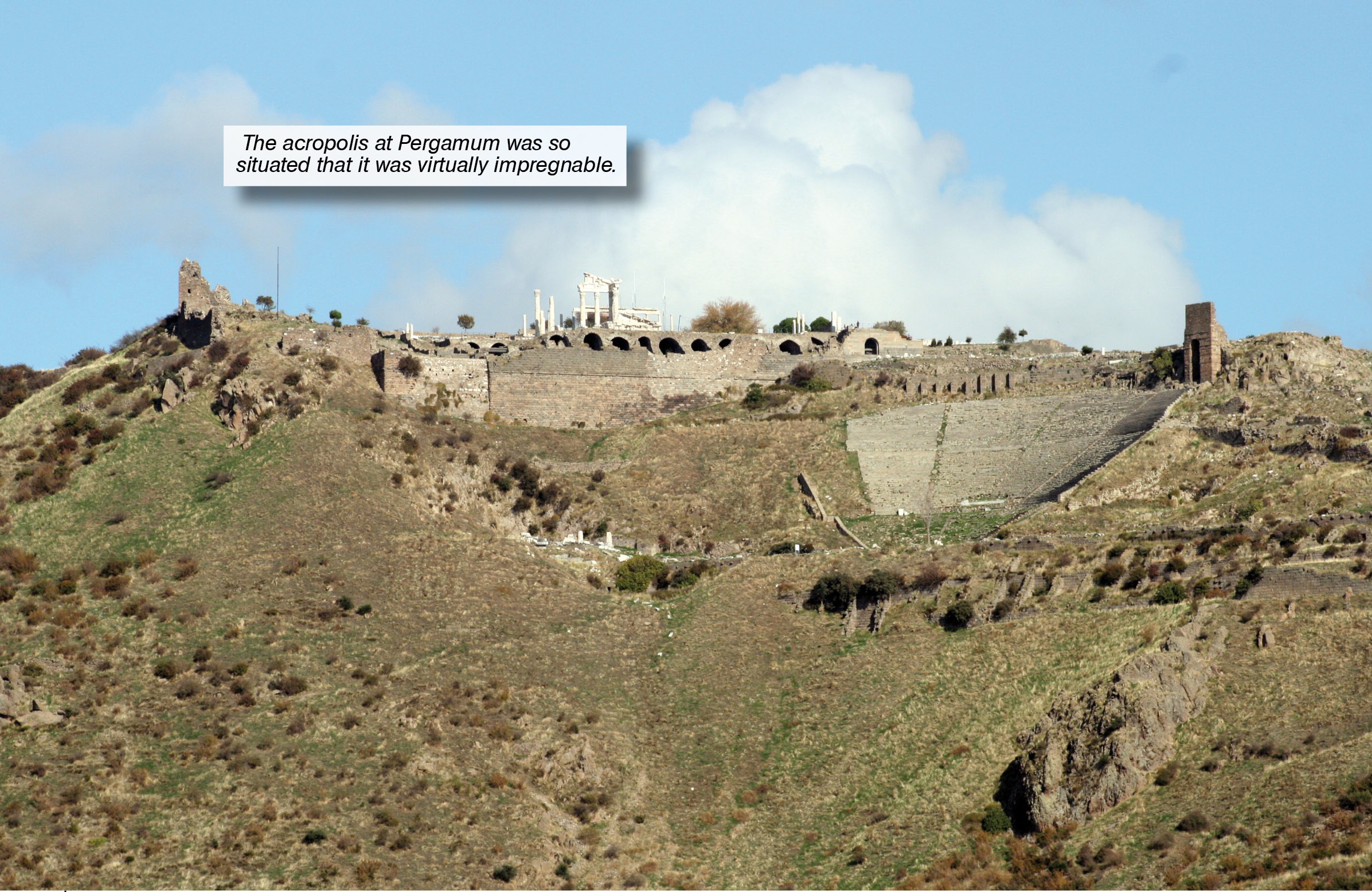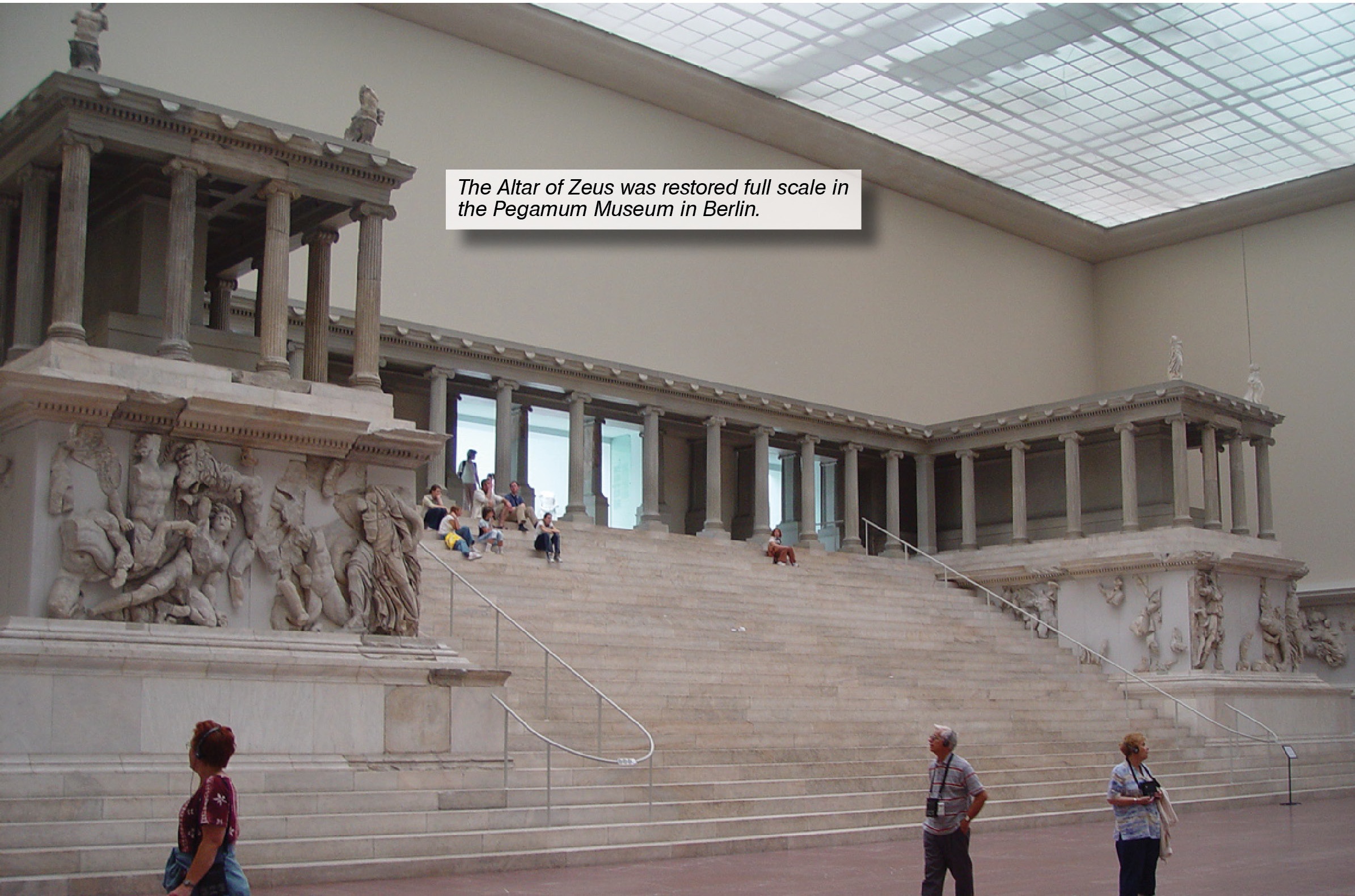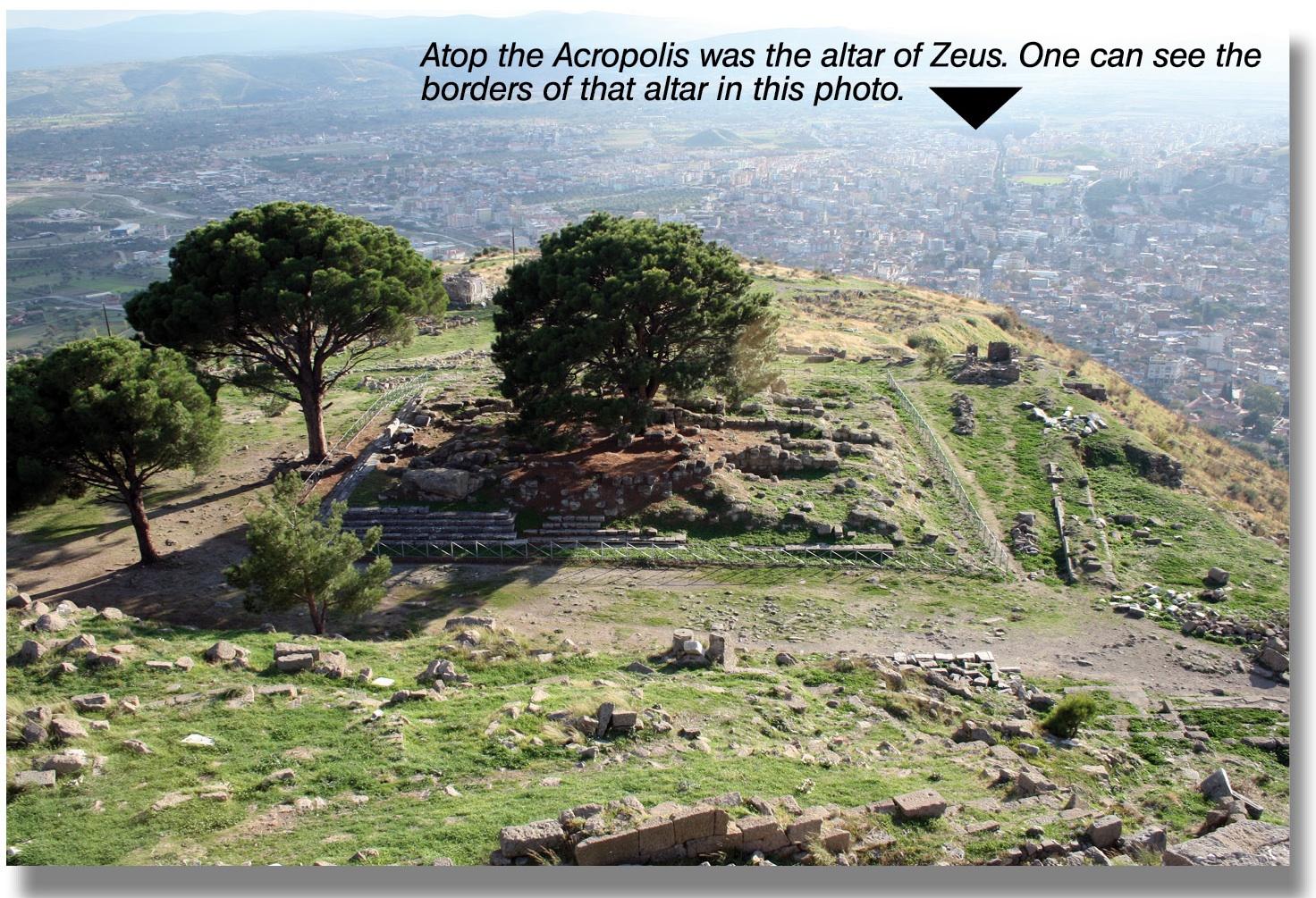
Pergamum is situated in a commanding position on the summit and south slope of a dramatic hill that towers over the fertile valley of the Caicus River, about 15.5 miles east of the Aegean coast. Pergamum contains the most archaeological material of the cities addressed in the book of Revelation (unless Ephesus is an exception). The city was established in ancient times (about the seventh century B.C.) and continues to exist to this day under the modern name of Bergama (the “p” and “b” sounds interchanging; cf. Panias and Banius as names for Caesarea Philippi). The earliest records of Pergamum are found in Xenophon’s works on the Spartan campaigns of 399 B.C. After the conquest of Alexander the Great (332-323 B.C.), the city emerged as a powerful and important city. In 133 B.C., the city was bequeathed to the Romans. It continued to grow and became one of the three ranking cities in the province of Asia. By the time John wrote the book of Revelation, the city had been a city-seat of government for 400 years (Blaiklock, 1983, 358). Blaiklock said, “It was natural, then, that the first temple of the imperial cult, the worship of the emperor on which the Christians looked with such deep abhorrence, should be located there. A temple to Rome and Augustus was erected in 29 B.C.” (1983, 358). William Ramsay writes that Pergamum was to John “the seat where the power of this world, the enemy of the Church and its Author, exercised authority. The authority was exercised in two ways—the two horns of the monster, as we have seen in chapter ix.—civil administration through the Proconsul, and the State religion directed by the Commune of Asia” (Ramsay, 1909, 283).

On the hilltop of ancient Pergamum, several ancient building complexes have been found, including the sanctuary of Athena which is a Doric Temple of the late fourth, early third century B.C. South and below the sanctuary of Athena lies Pergamum’s most famous monument—the altar of Zeus. The altar was reconstructed in the Pergamum Museum in Berlin. It is 118 feet long and nearly as wide, rising to a height of fifty feet. The friezes around the altar tell the story of the legendary struggle between the gods and goddesses of Olympus and the giants.
On the south slope of the hill of Pergamum was a residential area. There a small Ionic temple to Demeter was located, a gymnasium, and other public buildings. Still much lies buried under the modern city of Bergama.

Pergamum was also the location of the sanctuary of Asclepius, which was built there in the fourth century B.C. Most of what remains of the building is dated to the second century B.C. The Temple of Zeus-Asclepius is a small replica of the Pantheon in Rome. Many of Pergamon’s pagan sanctuaries were turned into Christian churches as a result of the spread of Christianity.
John said that the Christians in Pergamum dwelt where “Satan’s throne is.” This has been interpreted in various ways, including (a) a reference to the altar of Zeus; (b) a reference to the temple of Asclepius since it used the serpent as its totem (a staff with a snake wrapped around it); (c) a reference to Pergamum being the chief seat of state religion. Henry Barclay Swete said, “It is better to find in ‘Satan’s throne’ an allusion to the rampant paganism of Pergamum . . . symbolized by the great altar which seemed to dominate the place from its platform cut in the Acropolis rock, but chiefly perhaps to the new Caesar-worship in which Pergamum was pre-eminent and which above all other pagan rites menaced the existence of the Church” (Commentary on Revelation, 34-35). Hoerth and McRay believe that first provincial temple built to a Roman emperor in Asia Minor is probably what is intended (230).

In the text of Revelation, the church at Pergamum faced persecution for their faith in Christ. One Antipas had already suffered martyrdom. The church was troubled by a group identified as the Nicolaitans, about whom we know nothing.